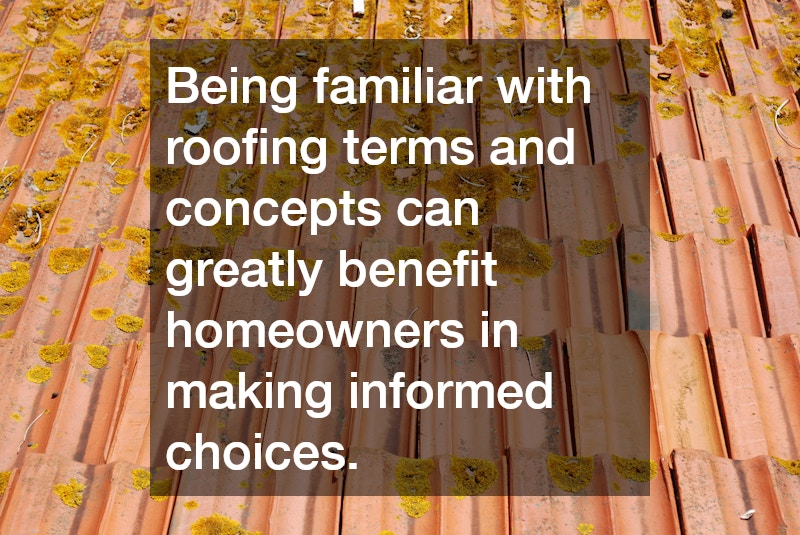
Roofing Terms You Should Understand as a Homeowner
Understanding roofing terminology can empower homeowners to make informed decisions about their roof’s maintenance and repair. This article provides an overview of essential roofing terms, empowering you to communicate effectively with roofing professionals. Whether you’re planning a roofing project or addressing an existing issue, knowing these terms will help streamline the process, ensure clarity, and avoid potential misunderstandings.
What are the Most Common Types of Roofing Materials?
Asphalt Shingles
Asphalt shingles are one of the most common roofing materials used by homeowners due to their affordability and durability. They are made from a fiberglass or organic base, coated with asphalt and minerals that help protect against various weather conditions. Their versatility makes them suitable for a wide range of architectural styles, providing both aesthetic appeal and functional benefits.
Homeowners appreciate asphalt shingles for their simple installation and ease of maintenance. With a typical lifespan ranging from 15 to 30 years, they provide a reliable roofing solution for cost-conscious homeowners. Additionally, they are available in a variety of colors and styles, offering ample choice for homeowners looking to match their roofs with their desired exterior designs.
Metal Roofing
Metal roofing is known for its longevity, energy efficiency, and resistance to harsh weather conditions. Often crafted from materials like steel, aluminum, or copper, metal roofs can last up to 50 years or more with proper care. They are highly reflective, which aids in reducing cooling costs by deflecting solar heat, thus improving energy efficiency.
In addition to longevity, metal roofing offers superior performance in extreme weather environments, such as heavy snow, hail, and high winds. This durability minimizes maintenance needs, making it an attractive option for those in areas with challenging climates. Furthermore, metal roofing is environmentally friendly, often containing a substantial percentage of recycled content and being fully recyclable at the end of its life.
Metal roofs come in a range of styles, including panels and shingles, allowing for customization to suit different architectural aesthetics. While the initial cost may be higher than other materials, the return on investment through energy savings and lower maintenance costs can be considerable over time. Considerations for noise insulation and proper installation are essential to maximize the benefits of metal roofing.
Tile Roofing
Tile roofing offers a distinctive appearance and is valued for its durability and suitability for various architectural styles. Typically made from clay or concrete, tile roofs can last for 50 years or more, making them a long-lasting choice for residential and commercial buildings. They provide excellent fire resistance and can effectively handle heavy rainfall and harsh sunlight.
The aesthetic appeal of tile roofing makes it a favored option in regions with historical or Mediterranean architecture. Beyond its beautiful look, tile roofing contributes to energy efficiency by providing natural thermal insulation. Homeowners often choose tile for its ability to withstand elemental damage while adding a unique charm to their property’s exterior.
How Can I Choose the Right Roofing Contractor?
Checking Credentials and Experience
Ensure that the contractor is licensed, insured, and has relevant experience in roofing installations and repairs. Verifying these credentials provides peace of mind and protects homeowners from potential liability and substandard workmanship. Choosing a contractor with specific experience in the type of roofing material you have or plan to use is particularly crucial for optimal results.
Reviewing Client Testimonials and References
Look for reviews and ask for references to assess the contractor’s reliability and quality of work. Personal recommendations and detailed feedback from previous clients provide valuable insights into the contractor’s professionalism and customer service. Online platforms and local homeowner associations are excellent resources for gathering honest reviews and testimonials.
Understanding Pricing and Contracts
Obtain detailed quotes and review contract terms carefully to ensure transparency and fair pricing for the project scope. A comprehensive quote should outline the costs involved, the work schedule, the materials used, and any potential additional charges. This clarity helps homeowners avoid surprises and ensures financial planning aligns with the project’s demands.
Being familiar with roofing terms and concepts can greatly benefit homeowners in making informed choices. Understanding these common concepts will help you ask the right questions and feel confident in your home improvement decisions. This knowledge not only empowers you in discussions with roofing professionals but also aids you in ensuring the longevity and durability of your roof for years to come.
.
